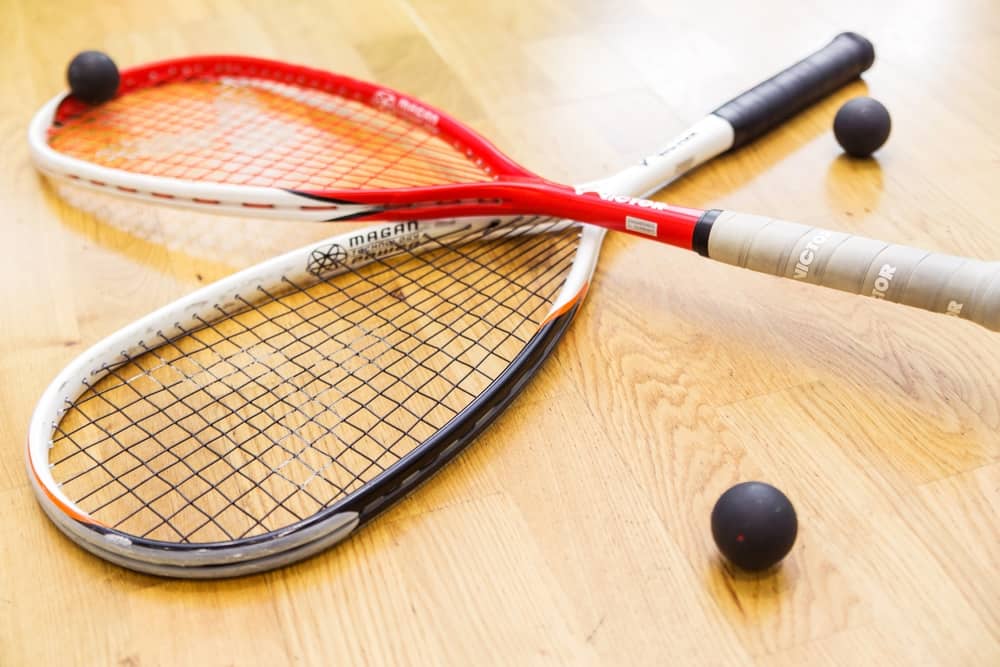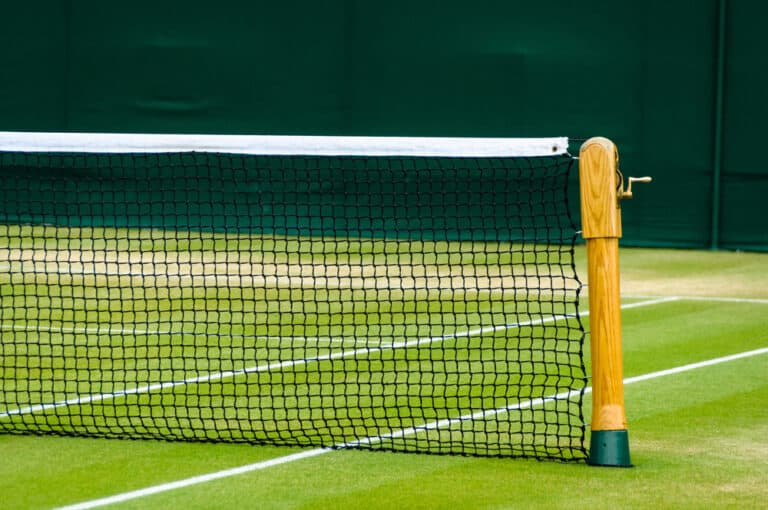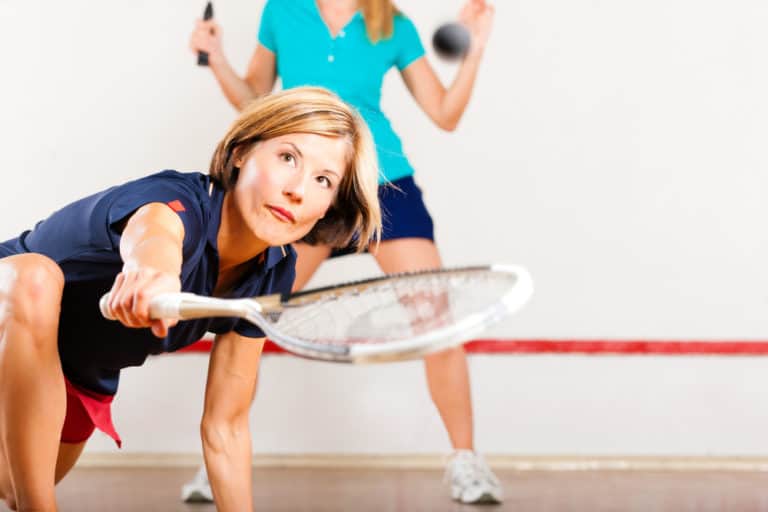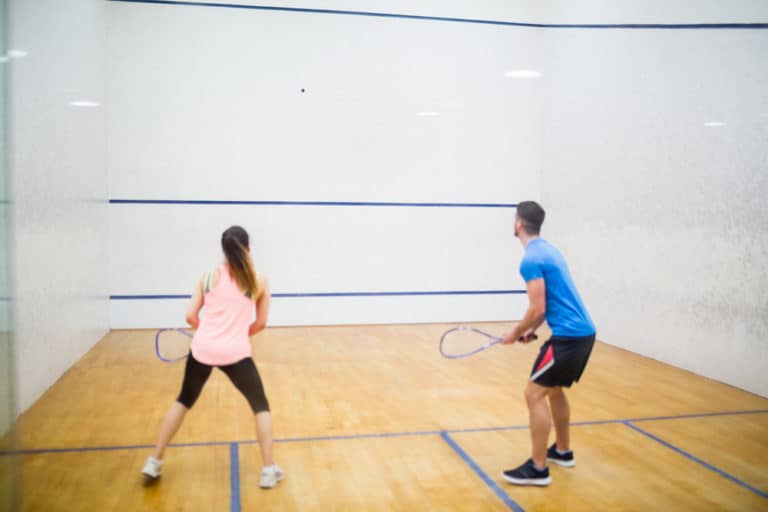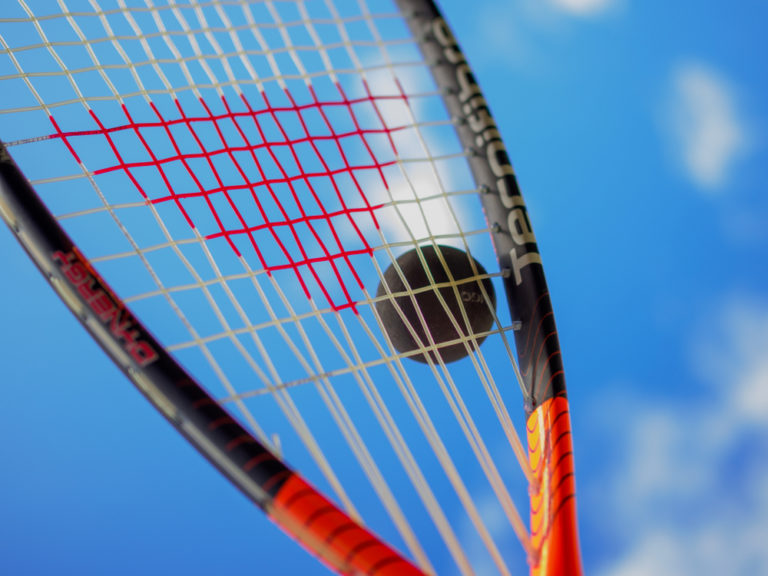Squash Racket Vs Tennis Racket
At first glance, a squash racket and a tennis racket look similar. If you are unfamiliar with these two racket games, a squash and tennis racket could easily be mistaken for the other. There are significant differences, and a closer look at a squash racket vs a tennis racket will highlight how opposite they are.
Squash and tennis rackets have different designs and manufacturing specifications that must be adhered to according to game rules. Squash and tennis racket’s main differences include the weight, length, and width of their frames and the thickness of their strings.
Squash and tennis rackets have distinct frames and strings to improve the game. In contrast to tennis, played with a heavier ball on an open court, squash requires a different effective design for a smaller ball and court. Squash and tennis rackets each fit the specifications required for their game, and here are their differences.
Differences Between A Squash Racket And Tennis Racket
Both tennis and squash are played on a court with a ball and a racket, and that is where the similarities stop. The frames of squash and tennis rackets look alike, but there are significant differences in length, width, and weight. The strings on each of these rackets differ in thickness and tension too.
Comparing a squash and tennis racket will give you a clear understanding of their differences. Both tennis and squash rackets have differences in their racket categories. This article will focus on the main structural differences between these two rackets and how to tell them apart.
Squash Rackets And Tennis Rackets Face Set Side By Side
The face of the racket is the first distinction between a squash racket and a tennis racket. The face of a squash racket is teardrop-shaped, while the face of a tennis racket is oval. Squash rackets often do not have a yoke or a bridge where tennis rackets do. Although the odd tennis racket without a yoke is available, they are the exception.
The maximum face width for a squash racket is 8.46 inches, and the rim thickness ranges from 0.63 to 0.83 inches. The face of a tennis racket can be as wide as 12.5 inches, and its rim can be between 0.86 and 0.94 inches thick. A tennis racket’s face is larger than a squash racket to give it the power to accommodate a bigger and heavier ball.
Squash Rackets Length In Contrast To A Tennis Rackets Length
The difference in length is another method to tell a squash racket from a tennis racket. Squash rackets do not exceed 27 inches in length and are shorter than tennis rackets to make them light and provide flexibility in the game.
Tennis rackets can be up to 29 inches long according to tennis regulations and 2 inches longer than a squash racket maximum length of 27 inches. The added 2 inches provides the tennis racket with a powerful swing, especially because it has an overhead serve. The squash racket takes advantage of being shorter by giving the player maneuverability and speed.
Squash Rackets Weight Compared To A Tennis Rackets Weight
The weight of the squash and tennis racket is not visible other than the tennis racket being bulkier, but holding one in each hand will immediately make you aware of the weight difference.
Squash rackets are lighter than tennis rackets and range between 3.88 and 5.29 ounces. Squash is played on a small court, and a light racket provides quick arm and wrist action to improve mobility. A tennis racket is heavier than a squash racket and weighs between 9 and 11 ounces. A tennis racket needs a heavier weight than a squash racket to move the ball across a bigger court.
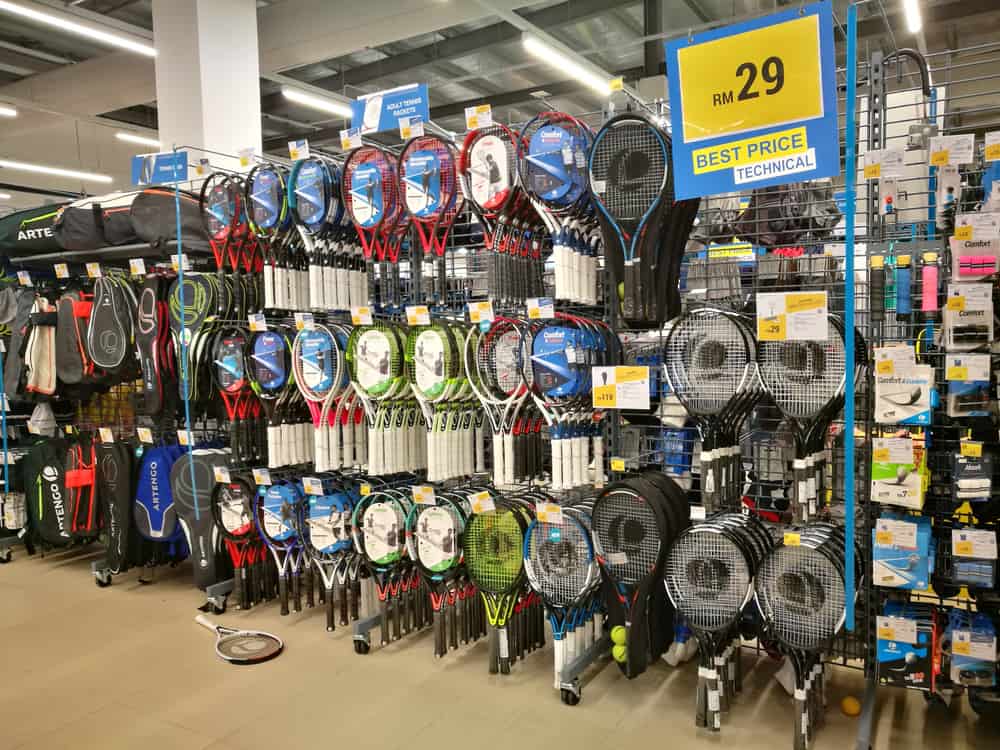
Squash Racket Strings Compared To Tennis Racket Strings
The strings of squash and tennis rackets are the one difference that is not as noticeable. Squash racket strings come in three sizes: 16 gauge, 18 gauge, and 20 gauge, and these thickness strings work on a tennis racket as well. Tennis rackets have twelve string thickness varieties that start at 13 gauge, which is thinner than squash rackets but goes up to 22 gauge, which surpasses a squash racket’s thickest string.
Strings have a big impact on a racket’s performance. Squash rackets perform differently than tennis rackets because they are played with a smaller and lighter ball, and the tighter strings give it better control. Tennis rackets are not as high-strung, and the flexibility gives the racket added power to propel the heavier tennis ball.
How Long Do Squash Rackets Last Compare To Tennis Rackets?
Squash and tennis rackets are expensive to replace, and manufacturers have given a lot of thought to these rackets’ design, knowing it will take some punishment during a game. Depending on a few factors, your racket could continue its use or may need replacing.
Tennis and squash rackets are built to last, but like most sporting goods, they will eventually need to be replaced. When tennis and squash rackets are first strung, they begin to break down, and re-stringing worsens the problem. New rackets are more robustly made, yet they are still breakable. Tennis and squash rackets can last for about two years if they don’t splinter.
Tennis rackets endure less abuse than squash rackets do. Because the game is played in a closed court with walls and limited space, constant contact with the walls can create splinters and fractures. High impact possibilities with the walls make it challenging to determine a squash racket’s lifespan but necessitates regular inspection and will result in a lower average lifespan than a tennis racket.
Can Squash Be Played With A Tennis Racket?
Using a tennis racket is not a good idea if you want to learn how to play squash or want to try it. The misconception that tennis and squash rackets can be used interchangeably in their respective games because they resemble one another is a common mistake.
Squash rackets have a different design than tennis to comply with squash rules and give players the best performance and avoid injury.
Squash is a fast-paced game played on a much smaller court than tennis. A squash racket is light to provide flexibility for a player that needs to move quickly across a small space. A heavier tennis racket will not only slow you down, but its bigger size will be a hindrance when you must play in a tight corner, which often happens in squash.
The main reason for not playing squash with a tennis racket is the risk of injury. Because a squash racket is lighter and shorter than a tennis racket, you can swing the racket with just your wrist and forearm. The tennis racket’s size is not designed for quick wrist actions; when you attempt to use it for that purpose, it could injure your wrist or muscles.
A larger tennis racket could also be potentially harmful to your opponent. Tennis rackets will cause an unnatural swing action, and because it is longer could cause an unfortunate collision with an opponent. Do not use a tennis racket to play squash; it will ruin the experience, and you could potentially injure yourself or an opponent.
Conclusion
Squash and tennis rackets are each uniquely designed for their courts and game design. Although there are similarities, the differences are easily recognized once you compare each racket’s width, length, weight, and strings. Playing squash with a tennis racket is a bad idea that can lead to injury and affect your game.
References
- https://www.myactivesg.com/sports/squash/features/squash-and-tennis
- https://www.head.com/en/squash/squash-how-tos/how-to-choose-the-right-squash-racket
- https://www.myactivesg.com/sports/tennis/how-to-play/tennis-equipment/how-to-choose-your-tennis-racket
- https://www.head.com/de_LI/tennis/how-tos/how-to-choose-a-tennis-racquet-in-10-steps
- https://www.usta.com/en/home/improve/gear-up/national/when-is-it-time-for-a-new-tennis-racquet.html

